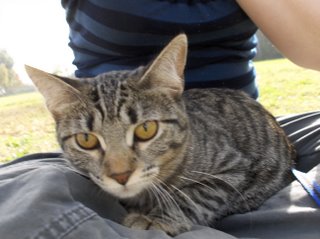
"Man," he said. "You know how to cook chicken. It's just perfect. Our children will be so spoiled- I'm going to have to tell them- 'Look, this is the best tasting food you EVER eat!' just so they understand how good it is."
What a compliment, eh?
I wish I had a picture of the roasted chicken we ate for dinner, but it didn't even occur to me to take a picture! Chicken, huh, whatever, too easy. But after hearing the preceding comment from G, it dawned on me- some people eat dry chicken. I had forgotten how bad chicken tastes when it's overcooked. I guess I've taken my own skills for granted. Here is a quick outline for roasting a chicken, and also a marinade recipe.
1. Chose a small (5 pound) bird. Remove giblets and neck (if included). Save neck for stock. Rinse the bird with cold water and pat dry.
2. Place on a cutting board. Check the bird for remainants of feathers. If any are found, scrape them off with a knife.
3. Cut off the wing tips and discard.
4. With the chicken on it's back, slide your hands in between the skin and the flesh. If you are gentle, you can slide your hand in to the thigh and even the back. This is an important step, as it separates the skin from the flesh, allowing the marinade to contact the flesh.
5. Lift open the skin from the breast and sprinkle in your spice seasoning. Use your chicken hand to rub it towards to the thigh. Pour some olive oil under the skin and rub it in. Use more spices if needed.
6. Rub some more olive oil on the outside of the skin and another slight sprinkling of spice. Place breast side up in a roasting dish (two inches in height). Bake at 375 for 30 minutes, then reduce heat to 325. Remove the bird and turn it, placing it breast side down in the dish.
7. Continue cooking for approximately 45 minutes to 1 hour. Check for doneness by inserting a probe thermometer in three places: 1. The flesh of the thigh should be at 180-190 degrees. 2. The thigh joint should be above 170 degrees. 3. The breast should be at 170-180 degrees. If you do not have a probe thermometer, use this other easy (but less accurate) method. Insert a sharp knife into the flesh of the thigh and breast about 1/2 an inch deep. Remove the knife and gently press on the flesh surrounding the incision. If clear juice runs out, it is cooked. A pinkish coloured or milky discharge means it's not quite done.
8. Allow the bird to stand for 15 minutes, breast side still down, before carving. Gently remove from the pan and serve!
Flipping the bird over is essential to getting the dark meat to a higher temperature than the breast. The thigh and leg need to get up above 180 to be tender and not chewy, while the breast is best if cooked to around 170. By flipping the bird over, you are exposing the dark meat to more direct heat and protecting the tender breast meat.
When I made this for dinner last night, I used a great spice rub from Penzey's called Northwoods Seasoning. It is a blend of spices including salt, pepper, thyme, paprika, rosemary and garlic. I highly recommend it, but really any seasoning will do. A wet marinade also works well, and can be poured under the skin for maximum flavour exposure. However, a wet marinade must be prepared ahead of time ( at least 2 hours) while a spice rub can be put on the bird right before cooking.
Lemon-Thyme marinade for chicken
3 lemons, juiced
1/2 cup olive oil
1 tb minced garlic
1 tb chopped fresh thyme or 1 tsp dried thyme
1 tsp salt
1 tb chopped fresh parsley (optional)
Combine all ingredients in a bowl. Place chicken in a large bowl and pour the marinade over the chicken and in between the flesh and the skin. Cover with saran wrap and refrigerate for at least 2 hours or overnight. When you are ready to cook, remove the chicken from the marinade and blot off the excess with a paper towel. Rub a couple tablespoon of olive oil onto the skin and sprinkle salt overtop.

1 comment:
Sounds delicious. I am always afraid of cooking whole chickens and turkeys because I'm afraid I'll undercook them.
Post a Comment